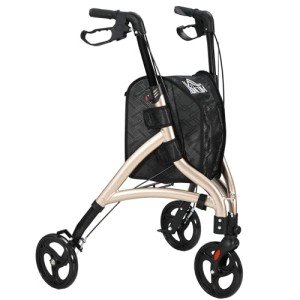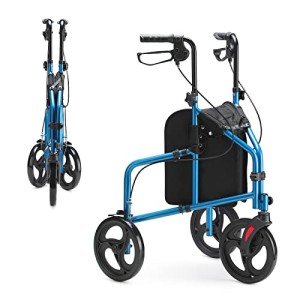This company has no active jobs
0 Review
Rate This Company ( No reviews yet )
About Us
Walker With Wheels Tips To Relax Your Everyday Lifethe Only Walker With Wheels Trick Every Person Should Learn
Walker With Wheels: Revolutionizing Mobility for Enhanced Independence
Introduction
For individuals experiencing mobility obstacles, walkers have long been a trusted aid, supplying stability and assistance. The introduction of walkers with wheels has transformed the landscape of assisted mobility, using users greater independence and freedom. This short article checks out the advantages, types, functions, and factors to consider surrounding walkers with wheels, equipping readers with vital knowledge to make informed options.
The Advantages of Walkers with Wheels
Increased Mobility
Walkers with wheels permit smoother motion. The wheels supply enhanced maneuverability, making it possible for users to browse various terrains, both inside and outdoors, with ease. This feature lessens the exertion included in walking, making it an appropriate alternative for people recuperating from surgical treatment, elderly patients, or those with chronic conditions.

Improved Stability
Numerous walkers with wheels come equipped with integrated brakes that offer users with a sense of security. When stationary, users can engage the brakes, preventing the walker from rolling away inadvertently. This feature makes walkers with wheels much more secure, particularly when browsing irregular surface areas or stepping aside to allow others to pass.
Practical Design
Advancements in style have caused walkers with wheels that accommodate a wider variety of needs. Some designs feature extra functions, such as seats for resting, storage compartments for individual products, and ergonomic grips that minimize stress on the hands.
Types of Walkers with Wheels
When choosing a walker with wheels, consideration of specific requirements is crucial. The following prevail types of walkers with wheels:
| Type | Description | Ideal For |
|---|---|---|
| Two-Wheeled Walker | Features wheels only in the front, offering support from the back. | Those who need more assistance for balance. |
| Four-Wheeled Walker | Comes geared up with wheels on all four legs, permitting higher maneuverability. | Individuals seeking more self-reliance and dexterity. |
| Rollator Walker | A type of four-wheeled walker with an integrated seat and storage. | Users requiring to take breaks and bring individual products. |
| Heavy-Duty Walker | Developed for people with higher weight capabilities. | People requiring extra resilience and support. |
Secret Features to Consider
When checking out options, prospective users ought to consider the following functions:
-
Weight Capacity: Each walker has actually a defined weight limitation. Guarantee that the picked model supports the user’s weight comfortably.
-
Adjustable Height: Select a walker with an adjustable height feature to guarantee optimum posture and convenience for the user.
-
Brakes: Look for walkers with user friendly brakes that lock when the user stops.
-
Storage Options: Walkers with compartments or baskets use useful solutions for bring individual products.
-
Foldability: Many walkers fold for easy transportation and storage, an important feature for users who typically travel or check out places.

-
Ergonomic Grips: Comfortable grips minimize hand tiredness during use, boosting the walking experience.
Frequently Asked Questions (FAQs)
1. Are walkers with wheels appropriate for outdoor use?
Yes, many walkers with wheels are developed to manage various terrains. Nevertheless, it is important to select a design with bigger wheels and proper tread for outdoor use to make sure stability and safety.
2. How do I decide which kind of walker with wheels is best for me?
Consider your mobility needs, living environment, and personal preferences. Consulting with a healthcare expert can offer personalized suggestions based upon your scenario.
3. Can I adjust the height of my walker?
A lot of modern walkers with wheels come with adjustable height settings. Always follow the manufacturer’s instructions to guarantee a safe and secure change for your comfort.
4. How do I keep my walker with wheels?
Routinely inspect the brakes, wheels, and general structure for wear and tear. Clean the walker with mild soap and water to keep hygiene, specifically if utilized outdoors.
5. Are there walkers with wheels developed particularly for users with impairments?
Yes, specific models deal with unique needs, such as larger frames, reinforced manages, or additional helpful functions like grips or back-rests. Highlighting individual requirements will help in choosing the ideal product.
Walkers with wheels represent a substantial advancement in mobility support, making it possible for users to preserve independence and improve their quality of life. With various choices readily available, understanding the different types, functions, and benefits of these walkers is essential for individuals seeking one that satisfies their requirements. By purchasing the right walker, users can navigate their environments with self-confidence, ensuring a more active and fulfilling lifestyle.
Last Thoughts
As we move towards a more inclusive world, the mobility aids offered, like walkers with wheels, continue to adapt and evolve. It is essential for users, caregivers, and health care specialists to stay notified about the most recent models and features to ensure that mobility help is efficient, safe, and easy to use.
In summary, walkers with wheels not only offer assistance; they empower individuals to recover their self-reliance, providing the liberty to engage with the world around them.
